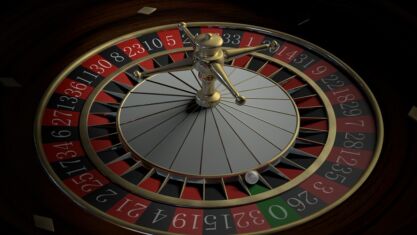You need a good point spread betting guide if you have never placed a wager on it before. Point spreads are quite popular at online sportsbooks, especially in competitive sports like football, basketball, rugby, and others. Every fan of these sports should know how to use point spreads to have the best possible result at the bookies.
In competitive sports, one team is always (a bit) stronger than the other. Bookmakers know it too as they reflect this inequality by giving one team better odds than its opponent. However, if all bettors are going to bet on one team to win, bookies will lose their money. This is not what sportsbooks are happy about.
So, what do bookmakers do to prevent bettors from betting on the favorite? They try to get an equal amount of action on both sides of every wager. This is the way to make a profit from the vig they charge regardless of the winning team. Point spread betting is one of the tools helping bookies, so every bettor should know about it.
Point spread betting guide
First of all, what is the point spread? It is a type of bets which requires the favorite to win by a certain number of points. Alternatively, it may ask the underdog to lose by a certain number of points. Only when it happens, the bettor will be paid out.
The aim of the point spread is to make two teams in a game equal for bettors even if one of them is stronger than the other in reality. However, it doesn’t only make bettor’s lives more difficult. Point spreads usually offer truly great payouts, so a bettor can raise lots of money if he makes the right choice.
In point spread betting, there is an established margin of victory and loss that both teams must meet to win the bet for a bettor. The point spread is always shown as a number with a “-” or “+” sign and can be divided into three types:
- Remains a fixed point spread
- Adds points to the final score of the underdog
- Deducts points from the final score of the favorite

Example of point spreads
Our point spread betting guide gives you an example. Supposedly, there are two football teams with a 4-point spread:
- Real Madrid -4 vs Villarreal +4
The favorite team (Real Madrid) must win by more than 4 points for bettors to receive payouts. Alternatively, the underdog team can lose by 1, 2, or 3 points to bring bettors their money. However, if the underdog loses by more than 4 points, bettors lose too. Also, Villarreal can win the game outright to win the bet.
Payout odds
Point spreads look like American odds and are shown as a number with a “-” or “+” sign. If you forgot what American odds are, take a look at our online betting guides for beginners. To know how much a bettor can win, he should first look at whether the odds are negative or positive.
- Negative odds show how much a bettor needs to wager to win $100. For example, if the odds are -150, a bet of $150 will result in $100
- Positive odds reflect how much a bettor could win from a $100 bet. For a positive bet of +150, a profit is $150 from a $100 bet.
The exact amount of a bettor’s winnings depends on the sportsbooks and the odds listed at the time he places a bet. At the same time, a sportsbook sets the maximum and minimum betting limits for bettors. There may also be additional terms and conditions, so make sure to read them before joining point spread betting.
















